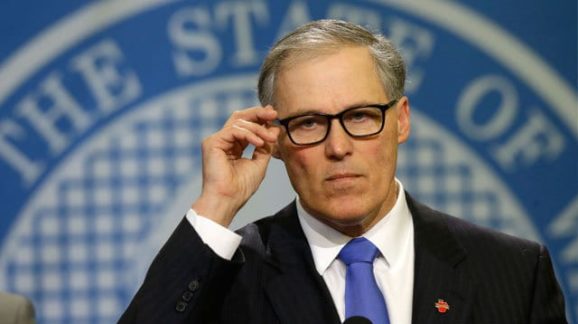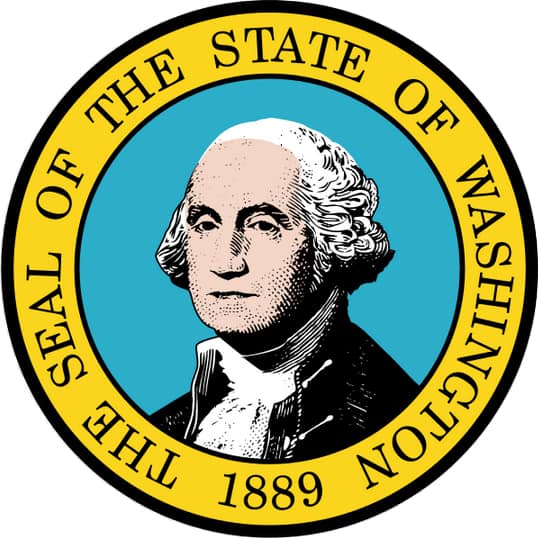Questionable Climate Financing in Washington Gov. Inslee’s Office

 On Friday, The Wall Street Journal’s editorial page led with a deep-dive editorial, “Climate Unaccountability: Are foundations running state energy policy without transparency?” This was the paper’s second item in less than a week prompted by months of CEI work using state open records laws. It followed up last Saturday’s “The Marrakesh Climate Express: A governor’s green policy advisor has a giant carbon footprint.”
On Friday, The Wall Street Journal’s editorial page led with a deep-dive editorial, “Climate Unaccountability: Are foundations running state energy policy without transparency?” This was the paper’s second item in less than a week prompted by months of CEI work using state open records laws. It followed up last Saturday’s “The Marrakesh Climate Express: A governor’s green policy advisor has a giant carbon footprint.”
Both editorials detailed questionable dealings in Washington governor and climate activist Jay Inslee’s (D) office. Inslee is one of three ringleaders of the climate resistance, with California’s Jerry Brown (D) and New York’s Andrew Cuomo (D).
These two items are in fact the tip of an iceberg CEI has discovered after asking to see what was behind politicians’ tantrums over President Trump’s June 1, 2017, announcement that he intends to withdraw from the Paris climate treaty. Records requests have exposed a truly remarkable donor/politician/NGO complex: privately underwritten political activism by elected officials, staffed up with privately funded personnel both in-office and others housed, off-books, in outside entities, complemented by an army of consultants, again paid for by private parties.
This is a breathtaking scheme by which foundations provide funding for official government employees, and entire outside operations, often running the money and hires through 501(c)(3) non-profit organizations. The governor’s staff, on taxpayer time, then cooked up a plan seeking tens of millions of dollars, per year, to support the campaign.
As a recent lawsuit and verdict in another case remind us, Washington and its governor are in the lead among the climate “resistance” to President Trump’s reforms of federal policy. Not as bombastic as Jerry Brown, Inslee is at least as involved in climate alarmism and policy activism, and more politically ambitious. Possibly relevant to this, the donor base of all Democratic presidential aspirants is also demanding this agenda.
Gov. Inslee leads a nominally all-government group called the Pacific Coast Collaborative, including Washington, California, Oregon, and British Columbia, working to impose renewable mandates, carbon taxes, etc. This policy activism by elected officials also turns out to be underwritten by private donors.
Additionally, Inslee has organized the Governor’s Climate Coalition (aka the U.S. Climate Alliance), which turns out to be a vehicle for raking in private funding to put off-the-books resources at the governors’ disposal. Inslee is close with high-profile political funders like Tom Steyer and emails we have obtained show that they keep that counsel private. Inslee’s office apparently sees no urgent need to be seen in public with the would-be King of Climate Politics.
That’s not even all of them. In short, Gov. Inslee is just the politician one would expect to see ring-leading the climate industry’s push to implement the agenda of the illicit Paris climate treaty by whatever means necessary. The Journal seemingly has further scrutiny in mind for the U.S. Climate Alliance. We certainly agree that more attention should be paid to this Potemkin operation which claims, for example, to somehow have produced expensive-looking reports that the governors’ offices clearly neither produced nor paid for.
Indeed, CEI’s initial findings were introduced by The Washington Times, in a November story titled “Democratic governors outsource climate campaigns to activist groups, emails reveal.” We now know that parties contacted for this first story were less than forthcoming about their roles, as the Journal suggests was also its own experience.
As Friday’s piece suggested, there is good reason to believe that Inslee’s USCA partners, other governors such as New York’s Mario Cuomo and California’s Jerry Brown, are also partaking of this model of placing green-group activists in-house to develop and implement policies—coincidentally, policies demanded by the political donor base. This, too, warrants further scrutiny.
This model is also being employed by elected officials at other levels of government. We expect exposure of all of this will help bring about greater public, policymaker, and media understanding of what is plainly a climate industry. If reforms are needed, as certainly appears to be the case, they should be pursued.
Equally important, this could lead to a better understanding of the shrill, orchestrated demands for greater taxation and regulation, and less individual and economic liberty, in the name of staving off a climate apocalypse.
We look forward to helping unpack what appears to be a diverse proliferation of coalitions and organizations supposedly created of late by governors and other politicians—which, public records strongly suggest, are in fact nothing more than websites with numerous consultants and off-books staff behind them. Public records also show we are far from the only ones wondering about the purpose of each new group, and how it might be different from the last.
This proliferation is the product of what one might call “a plethora of funder interest” in these politicians lending their offices to the “resistance.” The more the public and policymakers know about it, and the less the media feel free to trumpet this climate industry’s campaign rhetoric, the better off both we and the public debate will be.